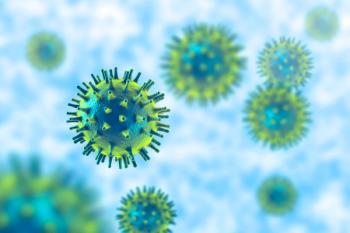
Diagnostic Criteria, Assessment Tools for the Treatment of Migraines
Migraines can have a high cost for the health care system overall, with an estimated $1 billion dollars or more spent in indirect and direct costs.
Migraines have a high cost not only for the patient, but their family and friends as well, as it can result in significant disability for the patient, explained Paul Green, PharmD, MHA, BCPS, DPLA, in a presentation at the American Society of Health-System Pharmacists 2022 Summer Meeting. However, migraines can also have a high cost for the health care system overall, with an estimated $1 billion dollars or more spent in indirect and direct costs. To help to decrease that burden for both patients, their family and friends, and the health care system, there are treatments available that can be used following the diagnosis of the type of migraine a patient is experiencing.
A common chronic neurological disorder with a strong familial correlation, migraines affect approximately 14% of adults at some point in their life, explained Green. Additionally, migraines are 3 times more likely to occur in women than men. There are also 4 primary phases that may occur as a part of the migraine for patients, which include the premonitory, aura, headache, and postdrome phases.
The premonitory, or prodrome phase, occurs in 77% of migraine sufferers. Symptoms of this phase can include fatigue, irritability, stiff neck, or even food cravings, among others, Green explained. This phase typically appears 24 to 48 hours prior to the onset of the headache.
Following the premonitory phase is the aura, which approximately 25% of patients with migraines experience, with 1 or more focal neurologic symptom.
“Perhaps the most famous migraine phase is the aura,” Green said. “Traditional teaching is that migraine aura typically precedes the headache, however prospective data suggest that most patients with migraine also experience a headache during the aura phase.”
Typical migraine aura is characterized by gradual development, a duration of no longer than an hour, a mix of positive and negative features, and being reversible, explained Green. The aura of the migraine evolves gradually and can be confused with a transient ischemic attack during diagnosis.
Green noted that, when diagnosing the aura of a migraine, the positive features of the symptoms indicate the activation of discharge from the central nervous system neurons, which typically involves symptoms that are most often visual, such as seeing bright lines, shapes or objects. However, the symptoms can also be auditory, like tinnitus and hearing noises or music; somatosensory, such as burning pain or paresthesia; or motor, such as jerking or repetitive rhythmic movements. There can also be negative features of the aura, which consist of the absence or loss of function, such as loss of feeling or ability to move a certain body part.
In the headache phase of the migraine, the headache itself is unilateral, pulsating, and can be moderate to severe, Green explained. As the attack severity increases, patients typically experience nausea, and sometimes even vomiting, as well as sensitivity to light and sound.
Once the spontaneous throbbing of the headache resolves, patients may experience the postdrome phase, during which sudden head movements transiently cause pain in the location where the headache was occurring.
“During the postdrome, patients often feel drained or exhausted. Some may even experience cutaneous allodynia, which is pain provoked by the stimulation of the skin that would not usually produce pain. Severe or persistent cutaneous allodynia may respond to an abortive prophylactic therapy. However, existing data suggest abortive therapy with triptans is less effective once cutaneous allodynia has developed,” Green said.
The Headache Classification Subcommittee of the International Headache Society has developed the most current, comprehensive system for the classification of migraine, which is the third edition of the International Classification of Headache Disorders (ICHD-3). The ICHD-3 can assist in the diagnostic process for migraines and can help differentiate the symptoms of the migraine from a transient ischemic attack.
The ICHD-3 defines episodic migraines as occurring less than 15 times with a headache on a day of any month, whereas chronic migraines are those that occur over 15 days or more in a month for more than 3 months, Green explained.
“This differentiation can be used to gauge treatment patterns and successes, as patients may transition between these 2 types of migraines,” Green said.
In addition to differentiating based on frequency of occurrence, the ICHD-3 also categorizes migraines as those with or without preceding aura, Green noted. For diagnosing a migraine without aura, the ICHD-3 characterizes these migraines as 5 or more moderate to severe headaches that last 4 to 72 hours without successful treatment and are unilateral and pulsating and worsened by physical activity. Additionally, these types of migraines cause at least 1 of the following symptoms: nausea and vomiting or sensitivity to light and sound.
For migraines with aura, Green noted the ICHD-3 categorizes these as 2 or more headaches that include at least 1 type of aura, such as visual, sensory, speech/language, motor, brainstem, and/or retinal, as well as at least 2 of the following characteristics: 1 or more aura symptoms spreading gradually over at least 5 minutes, 2 or more symptoms in succession, each aura symptom lasting 5 to 60 minutes, 1 or more unilateral aura symptom, and/or a headache occurring within 60 minutes of the aura.
REFERENCE
Green P, Sejal P. Demystifying the Aura of Migraine: Best Practices and Novel Treatments. Presented at: ASHP Summer Meeting 2022; June 12, 2022; Phoenix, AZ.
Newsletter
Stay informed on drug updates, treatment guidelines, and pharmacy practice trends—subscribe to Pharmacy Times for weekly clinical insights.













































































































































































































